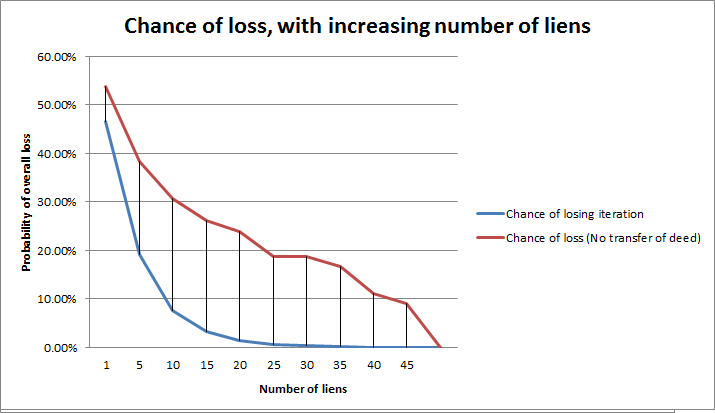The lien auction was online, and register bidders could compete with each other, just like eBay. Being a seasoned eBay veteran and former consigner’s assistant, I knew to wait until the last day of the auction to start sniping.
To my surprise, each and every lien was already well north of the 10% premium I had assigned to them. I succeeded in actually making only one bid — which was actually an user error on my part as I bid on the wrong item and ended up entering a >20% premium. I was eventually outbid for that one lien. Why? Some speculation I have is:
1. Lien bidders are not sophisticated. This was the first Colorado tax lien auction of the year. Since lien prices are low, it is easy to be an undisciplined bidder and get swept in the hysteria. Adding that extra $20 to a $800 lot does not seem to make a big difference, but in investing, pennies count. Also, tax liens are heavily promoted to the “get rich quick” sector that never actually does — Kiyosaki fanatics among others.
2. The more liens owned, the less risky they are. To illustrate this, I present a graph of how the number of premiums affected the probability of loss. Profits as a percentage on average were not affected, but became more stable. As a point in favor, two to three bidders swooped up all the liens.
3. Quantitative easing. These bidders weren’t merely institutional, they were leveraging quantitative easing. This post has more information.
I did end up with six liens in a rotational bidding auction wherein the liens are blindly assigned to each bidder in a round-robin fashion. Out of these six liens, three have already been redeemed in four months; well above El Paso’s published statistics predicted. But since I paid no premium on those, these already generated better returns than I would have in any other cash-based investment, and I am not worried about getting stuck with a dead-end property on any of those.
Also, tax liens are a cyclical market. Owing to the fact that recent years have disproportionately benefited the well-off, the “markets for rich people” are saturated at the moment. This includes commercial real estate and, apparently, tax liens. Premiums were <2% following the bust of 2008.
So my takeaways are:
- Tax liens are an extremely saturated market at the moment.
- Tax liens are not as profitable as sharks such as Kiyosaki make them to be. Numbers must be understood. As far as I can tell, my numbers were accurate except maybe a slightly optimistic redemption curve.
- The more money one has, the more money one can make.
- Rotational tax lien auctions are where the profits are right now. The problem is finding enough of them to park all your money.
For me, it was a good, if sobering, experience.

Leave a Reply